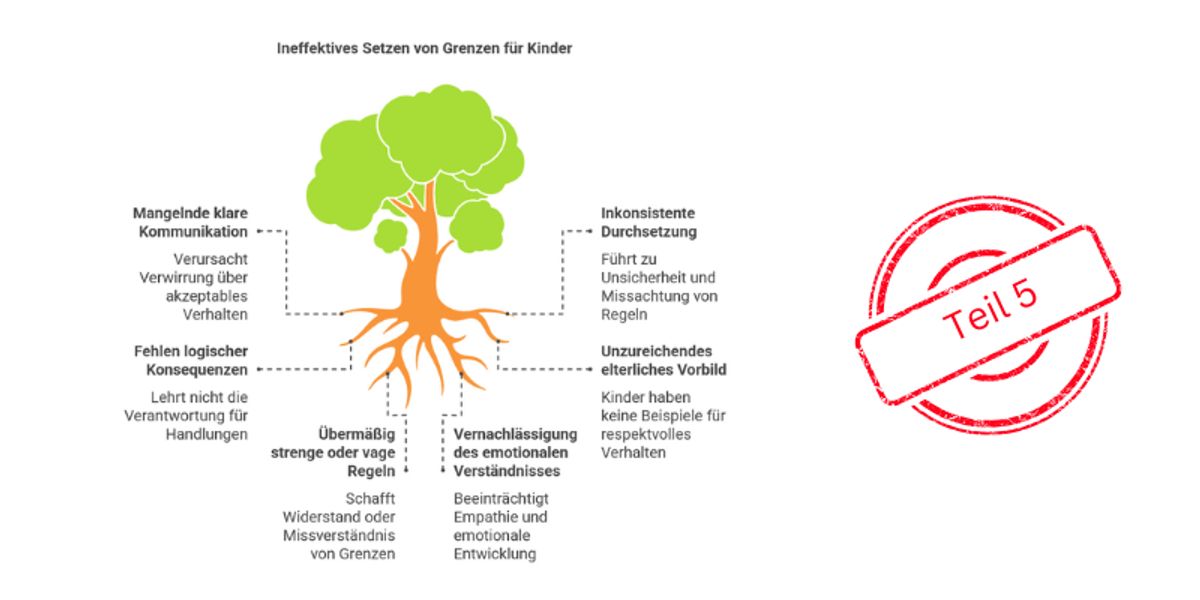Boundaries are an essential part of living together. They provide orientation and safety – especially for children who are going through a rapid developmental process. But which boundaries are indispensable, and how do we communicate them in a compassionate yet consistent way? In this article, we explore the key aspects of setting boundaries and show how adults in daycare centers (and at home) can create a clear and loving framework.
Why Boundaries Are Important
Boundaries provide children with security and orientation. Through established rules, they learn what is allowed in their environment and what is not. This gives them stability and supports their development. At the same time, boundaries protect not only the individual child but also others. When every child knows that certain behaviors are not acceptable, everyone feels safer. Moreover, boundaries contribute to emotional development, as children learn where their actions must stop and where the needs of others begin. This fosters empathy and social responsibility.
Indispensable Boundaries in Daycare Centers
Certain boundaries are essential in daycare settings. For instance, physical violence is unacceptable. Hitting, kicking, or biting are boundary violations that must be addressed immediately. A clear, calm statement such as “Stop! We do not hurt each other here” helps de-escalate the situation. Children can also be shown alternatives, such as hitting a pillow to release their frustration. Verbal abuse or bullying is also unacceptable, as insults or exclusion can leave lasting emotional scars. These incidents should be addressed promptly, with discussions about why words like “You’re stupid” can be hurtful and how to express anger or frustration appropriately. Respect for property and materials is equally important. Handling both personal and shared belongings responsibly fosters accountability and respect. Explaining to children that toys belong to everyone or to specific individuals, coupled with logical consequences such as helping to repair damaged items, can be very effective.
Communicating Boundaries
The communication of boundaries should be clear and positive. Use short, understandable sentences like “We walk in the group room; we run outside” and provide specific instructions instead of general prohibitions. Positive formulations such as “You can do it this way to make it okay for everyone…” are more effective, as they offer alternatives. Punishments should be avoided, as they often only result in short-term compliance and can harm trust. Instead, logical consequences directly related to the behavior can help children understand the impact of their actions, such as cleaning up together after something is spilled.
Balancing Understanding and Consequences
It is crucial to strike a balance between understanding and consequences. Empathy helps to acknowledge the child’s emotions: “I understand that you are angry. However, you cannot hit anyone.” Authenticity and consistency are essential, as children quickly notice uncertainty or inconsistency. Boundaries make sense when they ensure safety, protect social harmony, or promote personal development. Everything else should be reviewed for relevance.
Boundaries at Home: Challenges and Solutions
At home, parents often encounter situations requiring clear boundaries. Common challenges include:
- The child refuses to go to bed: A clear bedtime routine with set times minimizes discussions. Parents can remain calm yet firm: “It’s bedtime now. You can play again in the morning.”
- Resistance to tidying up: Explain the importance of order by saying, “Once you tidy up, we’ll have space for your new game.” Breaking the task into small, manageable steps can also help.
- Sibling conflicts: Clear rules for interacting with one another are helpful. Parents should mediate conflicts without taking sides, emphasizing, “We solve problems without hitting or shouting.”
- Screen time: Limiting time for TV or tablet use is essential. Clear agreements, such as “After dinner, you can have 30 minutes of tablet time,” provide structure.
By being role models for respectful interactions with rules, parents convey the importance of boundaries. Patience and consistency are key factors.
Tips for Everyday Life
Rules can be developed together with children, strengthening their sense of responsibility. Visible rules in the form of pictures or symbols are particularly helpful for younger children or those with language barriers. Short, clear explanations like “That’s dangerous!” or “That hurts others” are often sufficient. Through role-playing or reading stories, children can playfully learn what happens when boundaries are crossed and how to find alternatives.
Summary of Tips
- Boundaries provide security and orientation.
- Indispensable boundaries: No physical violence, no verbal abuse, respect for property.
- Communication: Use clear and positive language, logical consequences instead of punishments.
- Balance: Show empathy but act consistently.
- Practical support: Develop rules together, make them visible, give short explanations, practice through play.
- At home: Establish routines, mediate conflicts, limit screen time, and lead by example.
Setting boundaries is a central aspect of living with children. It’s not about strict prohibitions but about providing orientation points that offer security and reliability. By acting consistently and empathetically, professionals and parents can convey important values such as respect, consideration, and self-regulation. This way, boundaries become a positive framework that fosters children’s development and guides them toward a self-reliant life.
In the next article in our series, we will focus on Conflict Prevention and explore which conditions and daily strategies can help prevent conflicts from arising or address them early.
